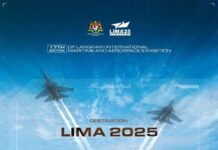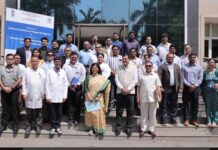MAY 27: In a landmark move aimed at strengthening India’s self-reliance in defence and advancing the domestic aerospace industry, Raksha Mantri Shri Rajnath Singh has approved the Execution Model for the Advanced Medium Combat Aircraft (AMCA) Programme. This approval marks a significant step forward in the country’s ambition to design and develop cutting-edge indigenous fighter aircraft under the Aatmanirbhar Bharat initiative.
The AMCA Programme will be spearheaded by the Aeronautical Development Agency (ADA), which will oversee its execution through collaborative partnerships with Indian industry players. The newly approved Execution Model emphasizes inclusive participation by providing equal opportunities to both public and private sector companies. These entities will be allowed to bid for the programme independently, as part of a joint venture, or as members of a consortium, ensuring a level playing field and encouraging healthy competition. Importantly, all participating entities must be Indian companies that comply with the nation’s laws and regulations.
This development strategy reflects a broader vision to leverage and consolidate indigenous expertise, capabilities, and industrial infrastructure to produce an advanced fifth-generation combat aircraft tailored to India’s strategic requirements. The successful development of the AMCA prototype will not only be a technological achievement but also a major milestone toward achieving self-sufficiency in the aerospace and defence sectors.
The AMCA is envisioned as a multirole stealth fighter with next-generation features, including stealth, supercruise, advanced avionics, and Artificial Intelligence-enabled systems. Its development will be a testament to India’s growing design and engineering prowess in high-tech defence manufacturing.
The involvement of the Indian industry in such a high-value, high-tech programme is expected to boost research and innovation, generate employment, and stimulate the growth of a vibrant defence manufacturing ecosystem in the country. The Execution Model encourages collaboration, technology sharing, and long-term investment by domestic firms in aerospace capabilities.
To initiate the development phase, ADA will soon release an Expression of Interest (EoI), inviting eligible Indian companies to participate in the AMCA Programme. This move is expected to set the stage for a transparent, competitive, and collaborative development process, laying the foundation for a truly indigenous and future-ready air combat platform.
Overall, the AMCA Programme represents a strategic leap toward India’s long-term vision of self-reliance in defence and technological innovation in aerospace engineering.




















